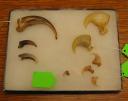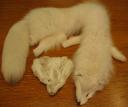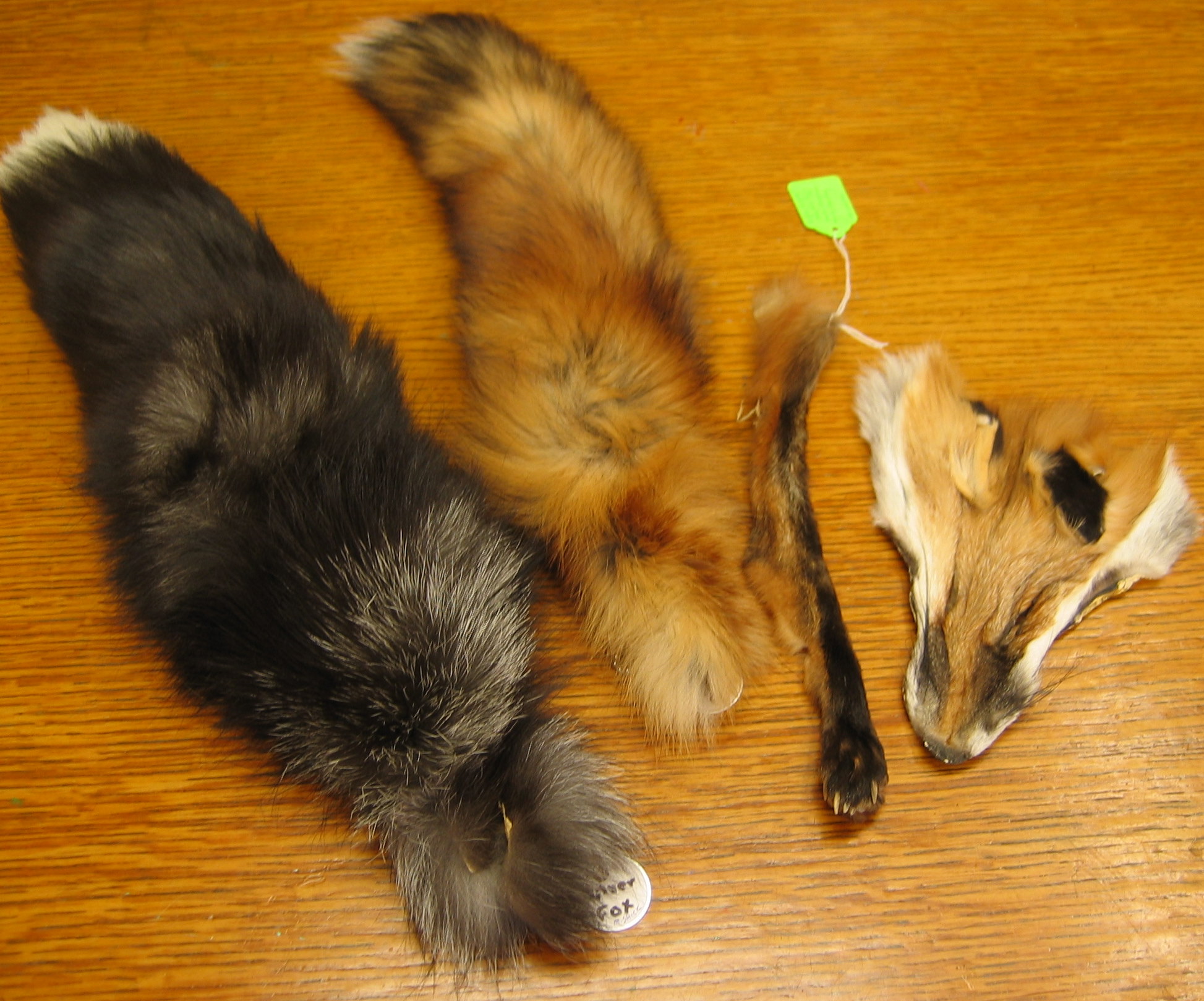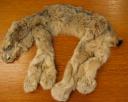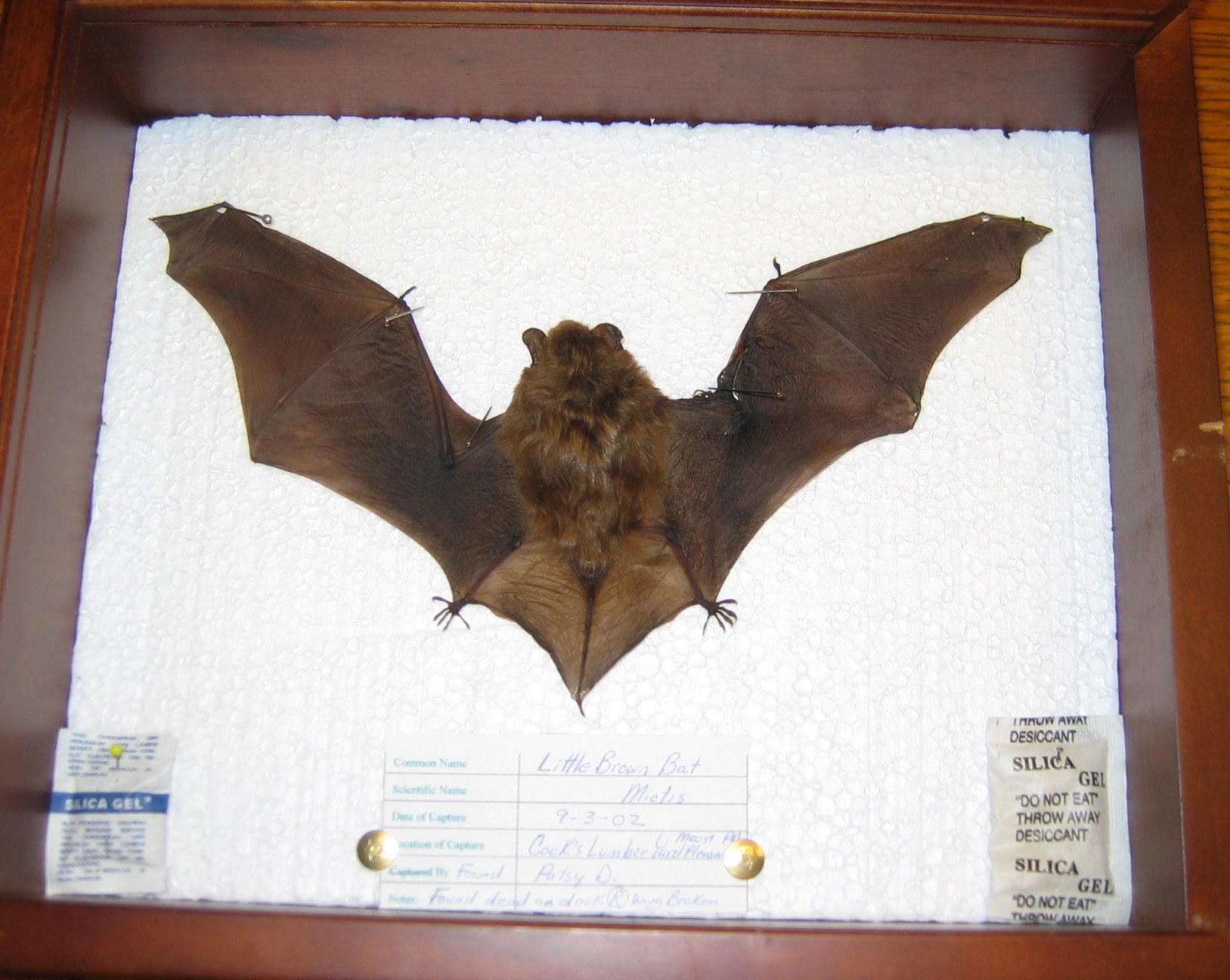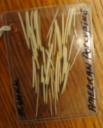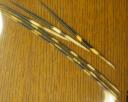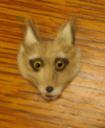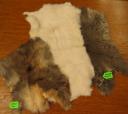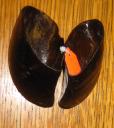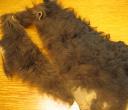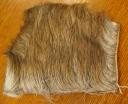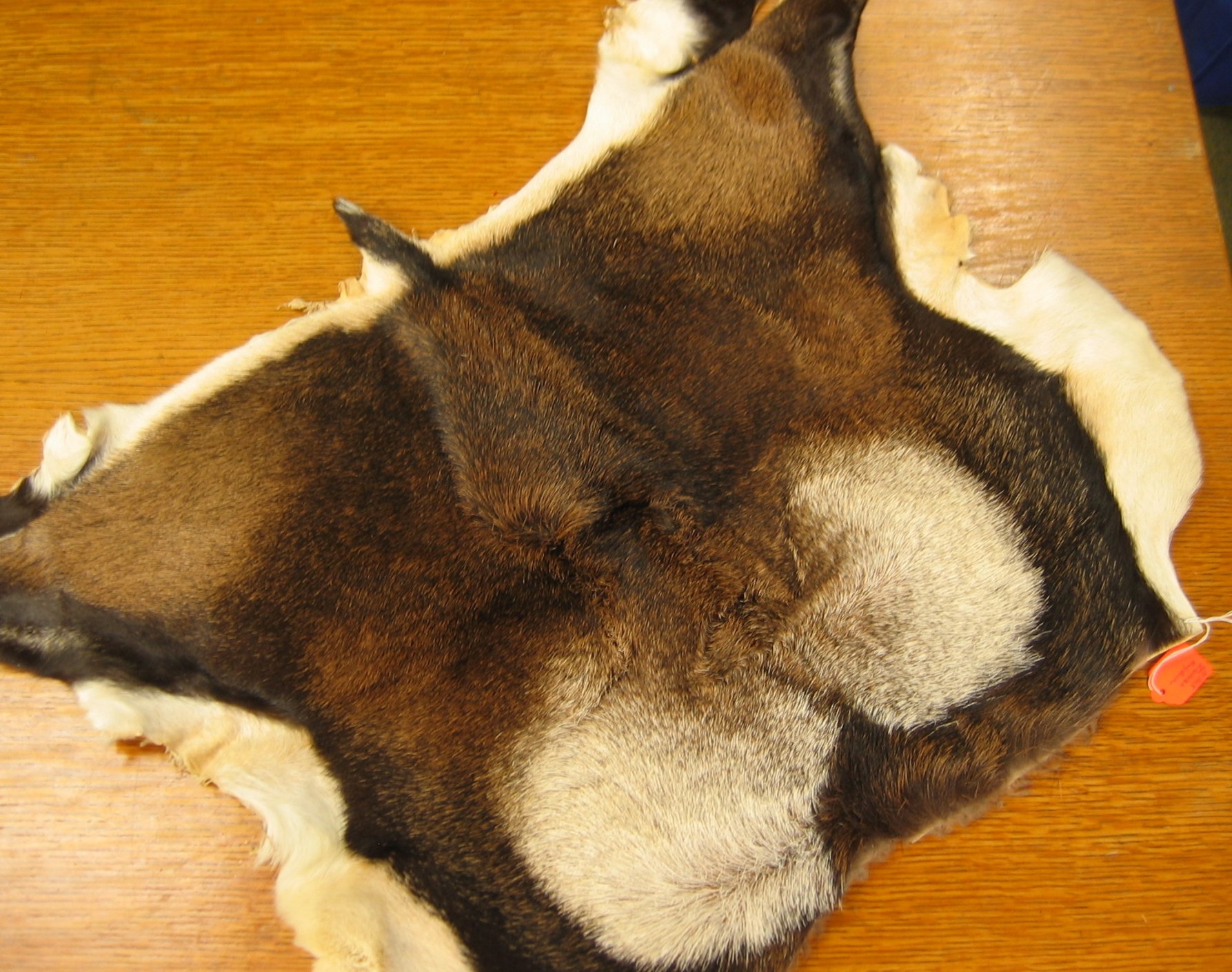Mammals February 23, 2008
Soft Anatomy
-
Mammary glands.
-
Diaphragm.
-
Four Chambered Heart.
-
Larger brain.
-
Fur or hair.
-
Warm blooded.
Hard Anatomy
-
Seven neck vertebra
-
Four limbs.
-
Specialized teeth in sockets.
-
Less bones in skull.
-
Lower jaw in two parts.
In the study of mammals the group known as carnivores is one that generates the most interest in displays and presentations. These are animals that are predominantly meat eaters and are characterized by their canine teeth and the carnasial pair of shearing teeth preceding the molars.
Plaque of North American Predators. Prints include; grey fox, coyote, wolf, bobcat, and cougar. Canine prints show nail marks while the feline tracks do not.
The North American Predator featured on this plaque are canine (dog) and feline (cat) in nature. My favorite question to ask children is what animal family has the biggest members, Dogs or Cats? Most say dogs right away. But given some thought to additional examples, like the paw prints, teeth and claws of lions and tigers the consensus soon changes. In fact looking at history cats have always been larger than dogs. The house cats we keep are really the chihuahuas of the cat family.
This display includes , from the Left side, the claw of a grizzly bear, a wolf and a domestic dog. On the Right side is the claw of an African lion, a cougar, three lynx claws and the claw of a house cat. Bears and dogs have non-retractable claws. Cats, with the exception of cheetahs have retractable claws. Weasels, another carnivore have semi-retractable claws.
Comparative display of canine teeth. Left to right are wolf, African lion replica, and Siberian tiger tooth replica.
Paw print of Bengal tiger.
Canine Pelt specimens:
Pelt of Arctic fox and mask. This is an animal that changes the fur color in winter as an adaptation to aid in hunting. This animal also has shorter ears to withstand cold temperatures and avoid frost bite. As with most fox species this animal has a very bushy tail and pointed nose. Tail has a black tip with is the opposite of the red and silver fox below who have a white tipped tail. (see below)
Here are examples of other common fox species. From the left side we have the tail of a silver fox, the tail of a red fox, the leg of a red fox and a red fox mask. These foxes have longer ears and maintain their color year round. On the right is a photo of a Kit fox leg. This animal lives mainly in the desert and has a less colorful tan pelt that blends with its surroundings.
This photo includes two coyote tails and two face masks. This canine has a wide range of many environments. It is very adaptable and has been know to inter breed with domestic dogs. The result is known as a Coy-dog. The coyote is a classic opportunist and is a big problem for farmers raising sheep and poultry.
Feline Pelt specimens:
Three photos of bobcat pelt. The first focuses on the characteristic short tail. Second is the top view and the third is the bottom view showing spotted pattern.
Pelt of juvenile lynx. Note the longer legs and shorter tail. On close examination the bottoms of the feet are fur covered and act much as snow shoes leaving vague smudgy prints as opposed to the well defined tracks of other predators.
Other Carnivores:
Skunk pelt. This specimen is very popular as most folks never get close to this animal. Once thought to be a member of the weasel family the skunk is famous for its odorific defense. Recently researchers have proved through DNA test that this animal is a species unto itself.
In North American both striped and spotted skunks are common. Once in a while a red colored skunk is born to either species.
Specimens of Omnivores:
Claws and pelt sample of American Black Bear. A common omnivore, not a true predator.
Bears have the largest claws in the mammal family. The Kodiak bear has the largest claw among bears. See the photo above with a grizzly claw compared to canine and feline claws.
Another animal with a omnivore diet is the raccoon. The photo above is of the famous ringed tail. This creature has a varied diet and is a famous garbage can raider. Bears will also raid garbage cans given the opportunity.
Bats:
Mummified Little Brown Bat. This Specimen died of blood lose due to a severed wing. It had flown into a telephone wire at high speed. Note that the wings are actually the arms of the animal with the fingers being the struts. Tail and legs are also connected by the thin flying membrane. Bats are very useful animals feeding almost exclusively on insects in North America. They are true fliers and not gliders. In the Southern states and in the tropics there are more bat varieties. Many of these have different diets. Their are fruit bats, nectar eating bats, fishing bats, and the vampire bat. Bats have specialized teeth to meet their dietary needs.
In our area most bats hibernate through the winter months. One species, the Hoary Bat, migrates to warmer climates.
Rodents:
Rodents are mammals with ever growing, gnawing teeth. They have no canines and have a large space after their incisors know as a diastima. Rats, mice, squirrels, porcupines and beaver are included in this group. The three photos above are of squirrel specimens. The first is a pelt sample of a Fox Squirrel. The second is the tail of a Red Squirrel and the third is the tail of a Gray Squirrel. The busy tail of a squirrel acts among other things as a drag to slow the animals fall as it leaps from branch to branch or to the ground. Ground hogs are actually large ground dwelling squirrels.
Quills of American Porcupine, Prehensile tail Porcupine and African Porcupine.
Like many wild animals most rodents have a hair pattern that is known as Agouti. This consists of hairs that are banded in color. This color pattern is effective in blending in with the environment and breaking up the animals outline. That color banding is easy to see in the quills of porcupines. The quills are actually specialized guard hairs.
Rabbits: Lagoramorphs
The first photo is a fox pin made of rabbit fur. The three pelts in the next photo are Eastern Cottontail, white domestic and grey domestic rabbits. The last photo is the face mask of a hare. Hare change color to white in the winter months as the arctic fox.
Most people are surprised to learn that rabbits are not rodents. Although they have the feature of ever growing, gnawing teeth they have many other features that mark them as different. The feet of rabbits, hares and pikas are very different than rodent feet and have sharp digging claws. They also have large hind feet for their hopping gait and short tails. They also have double incisors on the top jaw.
Artiadactile: Even toed Ungulates
This group of mammals contains a wide variety of animals including deer, cattle, sheep, goats, pigs and hippos! Most of these animals are herbivores and lives in herds.
Hoof of cow. Pelt sample of buffalo. Both of these animals are from the family Bovidae including wild and domenstic cattle. These are herd animals who are grazing hebivores.
Tail and skin of Wild Boar. This animal is an omivore and is related to the domestic pig.
Skin of Moose. This is the largest member of the deer family cervada. This family of animals are primarily browsers. The fur and skin of the moose are very coarse and thick.
Skin and tail of Kudu or Mountain Nyla. Another member of the deer family, this is a large antelope from Africa. It has a much finer fur and a striking stripe pattern.
Pelt of Tibetian blue Sheep. This animal is in the sheep and goat family. These animals are know for their hardiness and sure footedness. Some of this group are important to man as providers of wools.
Natureology
This is documentation of the collections of an amature naturalist. The specimens are part of an interactive display that has been featured at libraries, schools, scout and social events in western PA over a period of 20 + years.

